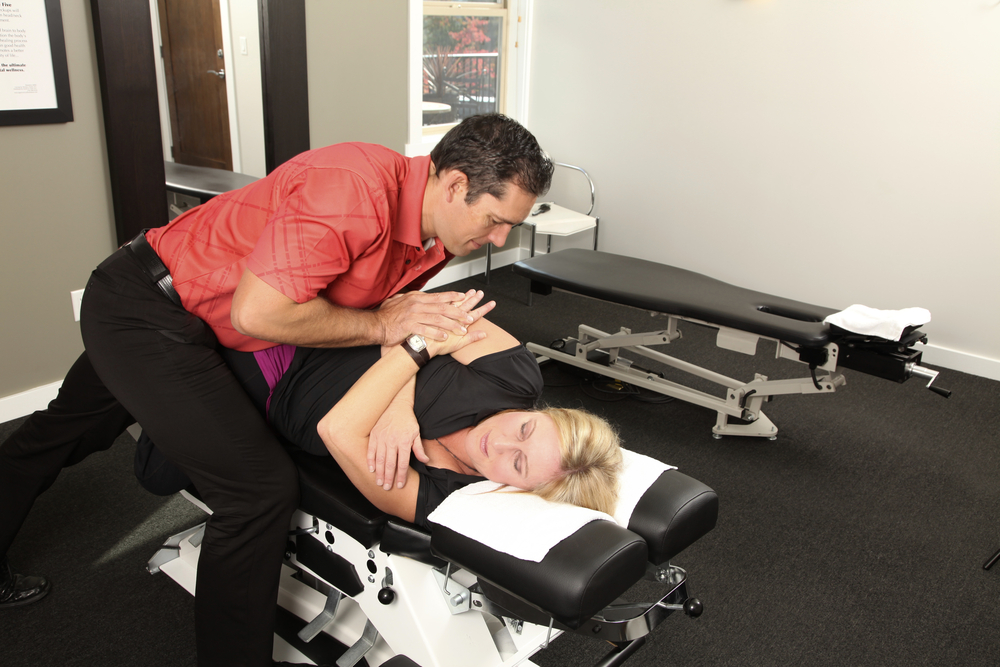In short, no.
There are various reasons why a Chiropractor uses different techniques and methods to achieve the same goal. Chiropractic care is a natural method of health care that focuses on treating the causes of the pain, which is often tailored to each patient’s age, condition, and specific pain they might be dealing with.
Chiropractic adjustments are when a small thrust is applied to the body to relieve nerve or joint tensions. There may be varying amounts of force and treatment frequency customized for each individual, which enters the notion that different conditions require different intensities.

Spinal Adjustments
A New Zealand government study found that adjustments are “remarkably safe” because it results from biologically sound, specific adjustment without the use of drugs or surgeries which give Chiropractors the excellent safety record. The most common way Dr. Meyer at Meyer Chiropractic analyzes how and where you need to receive your adjustment is by feeling for misalignments. If he feels he needs a more detailed view or if you’ve been in an accident, X-Rays may also be required. Based on these exams, Dr. Meyer will create a treatment plan. Throughout the course of the treatment, there will be multiple reviews of your progress done and other examinations to understand how to accommodate to your changing needs.
The ultimate goal is to improve your condition and wellness through gentle adjustments that work within your comfort zone. We always follow-up with continuing examinations, because adjustments can be dangerous for the chiropractor to perform, especially with certain conditions like Spondylolisthesis: a spinal condition that causes lower back pain due to the vertebrae slipping out of place onto the vertebra below it.
As said before, there are various adjustments, and not all of them include pops and cracks. The Chiropractor at Meyer Chiropractic in Southlake also uses an instrument known as an activator instead of only his hands to realign any faulty joint movement or perform low force adjustments. Furthermore, the Activator may be needed when the patient is nervous about the sounds made from adjustment or when the examinations show that it is not safe to manually adjust someone based on their unique condition like osteoporosis. Osteoporosis is a bone disease that occurs when the body loses too much bone, makes too little bone, or both.
Drop Table Technique
Another method commonly used is the Drop Table technique which is typically used for the lower back. This is where the patient lays face down with the chair slightly elevated. When being adjusted by the doctor, the force of being pushed down causes the seat to drop beneath the patient allowing the doctor to use less force to make the adjustment. This is highly effective in people with severe pain or conditions like osteoporosis and herniated discs. Similar to this, the Thompson techniques utilize a specially designed table with drop pieces to properly set and realign any improperly functioning joints. The doctor does this by checking the patient’s leg lengths due to misalignments in the spine. Other techniques include the Diversified technique, which consists of using hands only to help correct any biomechanical faults in the spine.
Spinal Decompression
Another common technique is known as the Cox distraction manipulation for the lumbosacral spine. This technique alleviates the spinal pain by using flexion-distraction and decompression to help patients get back to their everyday lives. This is minimally invasive designed to relieve suffering from pain as quickly as possible.
The Webster Technique
The last common technique is known as The Webster technique, which is used on pregnant women with the intent to correct issues with the pelvis and put the sacrum back into proper alignment. This procedure consists of massaging and stretching of the uterine ligaments on the abdominal wall.
Get Effective Chiropractic Care in Southlake at Meyer Chiropractic
Discover your best options with Chiropractic Care Adjustments as they are all based on specific needs for each individual. Adjustments are all made to ultimately provide long-term results helping patients go back to living their healthy lives.




